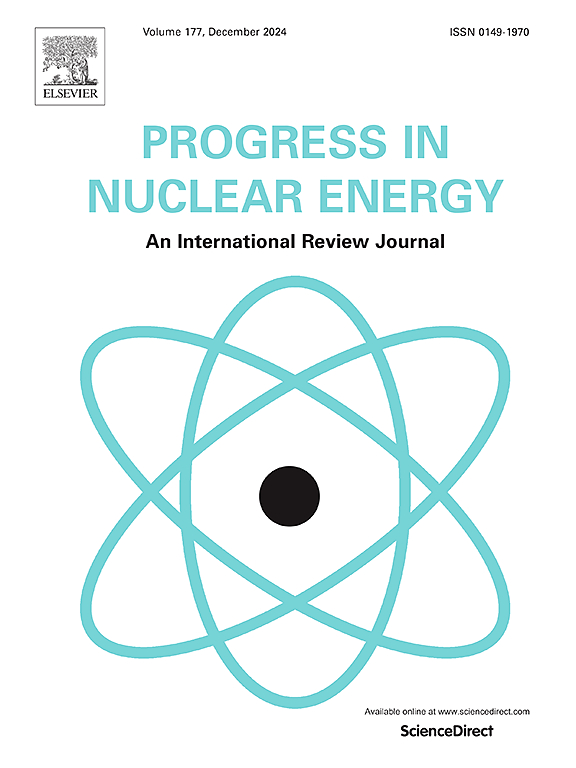Development and evaluation of a two-dimensional neutron diffusion model of a small modular heat-only reactor TEPLATOR using COMSOL
IF 3.3
3区 工程技术
Q1 NUCLEAR SCIENCE & TECHNOLOGY
引用次数: 0
Abstract
TEPLATOR, a collaborative innovation between researchers from the University of West Bohemia (UWB) and Czech Technical University (CTU), represents a promising solution for environmentally sustainable energy demands. This small modular heat-only reactor features a heavy water-cooled and heavy water-moderated pressure channel design, offering an alternative to fossil fuel-dependent heating and cooling plants, thereby reducing environmental impact and pollution. This article outlines the initial steps in developing a detailed neutron diffusion model for the TEPLATOR core using COMSOL Multiphysics software. The study focuses on developing and evaluating a two-group steady-state neutron diffusion model for the two-dimensional reactor geometry to analyze spatial neutronic dynamics under various control rod positions. Neutronic parameters were computed using the Serpent Monte Carlo neutron transport code and integrated into the diffusion model as multi-group constants. Calculations were conducted for the Beginning-of-Cycle (BOC) scenario. The obtained values of effective multiplication factor () from both the developed COMSOL diffusion model and Serpent codes remain consistent, with differences ranging from 242 pcm to 643 pcm across different control rod position scenarios. Additionally, the computational time of the developed diffusion model is significantly shorter than that of the Serpent code. Furthermore, the effectiveness of the diffusion model for practical design investigations and sensitivity analyses of the TEPLATOR reactor core is demonstrated by presenting steady-state neutron flux and power distribution calculated by the diffusion model, which was compared with Serpent code computations.
求助全文
约1分钟内获得全文
求助全文
来源期刊

Progress in Nuclear Energy
工程技术-核科学技术
CiteScore
5.30
自引率
14.80%
发文量
331
审稿时长
3.5 months
期刊介绍:
Progress in Nuclear Energy is an international review journal covering all aspects of nuclear science and engineering. In keeping with the maturity of nuclear power, articles on safety, siting and environmental problems are encouraged, as are those associated with economics and fuel management. However, basic physics and engineering will remain an important aspect of the editorial policy. Articles published are either of a review nature or present new material in more depth. They are aimed at researchers and technically-oriented managers working in the nuclear energy field.
Please note the following:
1) PNE seeks high quality research papers which are medium to long in length. Short research papers should be submitted to the journal Annals in Nuclear Energy.
2) PNE reserves the right to reject papers which are based solely on routine application of computer codes used to produce reactor designs or explain existing reactor phenomena. Such papers, although worthy, are best left as laboratory reports whereas Progress in Nuclear Energy seeks papers of originality, which are archival in nature, in the fields of mathematical and experimental nuclear technology, including fission, fusion (blanket physics, radiation damage), safety, materials aspects, economics, etc.
3) Review papers, which may occasionally be invited, are particularly sought by the journal in these fields.
 求助内容:
求助内容: 应助结果提醒方式:
应助结果提醒方式:


